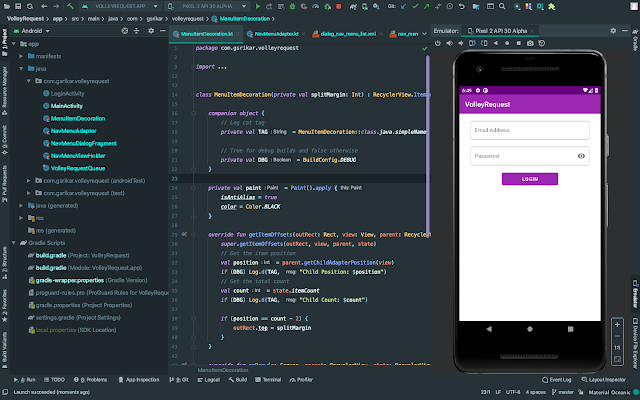The Kano Method in Product Management: A Comprehensive Guide
Introduction
Understanding what truly delights customers is one of the biggest challenges in product management. While some features are essential, others can significantly enhance customer satisfaction or even exceed expectations. The Kano Method is a powerful prioritization framework that helps product managers classify product features based on how they impact customer satisfaction.
Developed by Professor Noriaki Kano in the 1980s, this method categorizes product features into different types of customer needs—ranging from basic expectations to features that create excitement. By using the Kano model, product managers can prioritize features that maximize customer satisfaction while balancing essential functionality.
In this article, we'll dive deep into the Kano Method, its categories, how to apply it, and why it’s a game-changer for product prioritization.
What?
The Kano Method is a customer satisfaction framework that helps product managers categorize product features based on how they impact user satisfaction. It evaluates features across two dimensions:
- Customer Satisfaction – How satisfied users are when the feature is present or absent.
- Implementation Level – The degree to which the feature is implemented or how well it's executed.
The Kano Method breaks down features into five categories:
| Category | Definition | Customer Impact |
|---|---|---|
| Must-Have | Basic expectations | Dissatisfaction if missing, no extra satisfaction if present |
| Performance | Features that improve performance | Higher satisfaction with better implementation |
| Delighters | Unexpected features that wow users | High satisfaction when present, no dissatisfaction if absent |
| Indifferent | Features that users don’t care about | No impact on satisfaction |
| Reverse | Features that users dislike | Dissatisfaction if implemented |
Break Down
1. Must-Have Features (Basic Needs)
Definition:
These are the non-negotiable features that customers expect from a product. If these features are missing, customers will feel dissatisfied—no matter how many other advanced features the product offers. However, their presence does not significantly increase customer satisfaction.
Examples:
- Wi-Fi connectivity in a smartphone.
- Secure payment system in an e-commerce app.
- Basic privacy settings in social media apps.
2. Performance Features (Linear Needs)
Definition:
These features have a direct correlation with customer satisfaction—the better the feature is implemented, the higher the customer satisfaction. These are typically the primary differentiators between competing products.
Examples:
- Battery life in a smartphone.
- Website loading speed.
- Camera quality in a mobile app.
3. Delighter Features (Excitement Needs)
Definition:
Delighter features are the wow factors that customers don't expect but create excitement when they are present. These features set products apart from competitors and often drive customer loyalty.
Examples:
- Facial recognition unlock in smartphones.
- Free delivery on first orders in e-commerce apps.
- Personalized recommendations in streaming platforms.
4. Indifferent Features
Definition:
These are features that have no impact on customer satisfaction—whether they are present or not. These features might appeal to a niche audience but don't significantly affect the overall user experience.
Examples:
- Custom button colors in an app.
- Background music on a website.
- Complex animations for loading screens.
5. Reverse Features
Definition:
Reverse features are functionalities that dissatisfy users when implemented. These features might be introduced with good intentions, but customers may find them annoying or unnecessary.
Examples:
- Auto-playing videos on websites.
- Too many notifications in an app.
- Excessive pop-ups during user interaction.
How to Apply
Step 1: Identify Features
Start by gathering a list of potential product features based on user feedback, competitor analysis, and business goals.
Step 2: Design Customer Surveys
Create surveys asking customers two types of questions for each feature:
- Functional Question: How would you feel if this feature was present?
- Dysfunctional Question: How would you feel if this feature was NOT present?
Example questions:
- How would you feel if the app had a dark mode feature?
- How would you feel if the app did not have a dark mode feature?
Step 3: Categorize Features
Based on the survey results, categorize each feature into one of the five Kano categories.
| Response | Category |
|---|---|
| Like + Dislike | Delighter |
| Like + Indifferent | Performance |
| Indifferent + Indifferent | Indifferent |
| Dislike + Like | Reverse |
| Dislike + Dislike | Must-Have |
Step 4: Prioritize Features
Now, prioritize features by balancing:
- Must-Haves → Develop first.
- Performance Features → Optimize for competitive advantage.
- Delighters → Include if time and resources allow to differentiate the product.
Example
| Feature | Category | Priority |
|---|---|---|
| Step Counter | Must-Have | High |
| Real-Time Heart Rate Monitoring | Performance | Medium |
| Voice Assistant Integration | Delighters | Low |
| Custom Color Themes | Indifferent | Lowest |
| Ads in the Free Version | Reverse | Remove |

